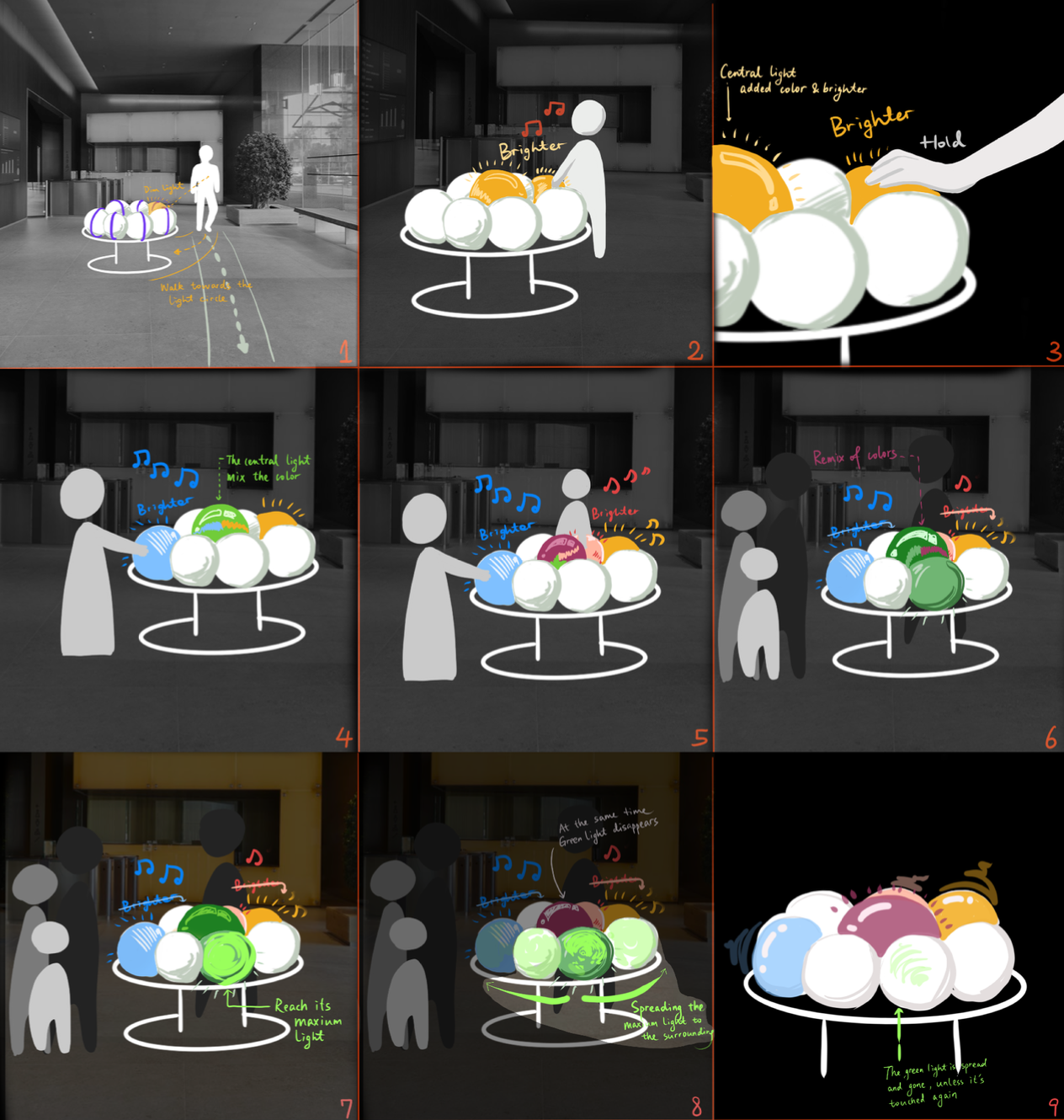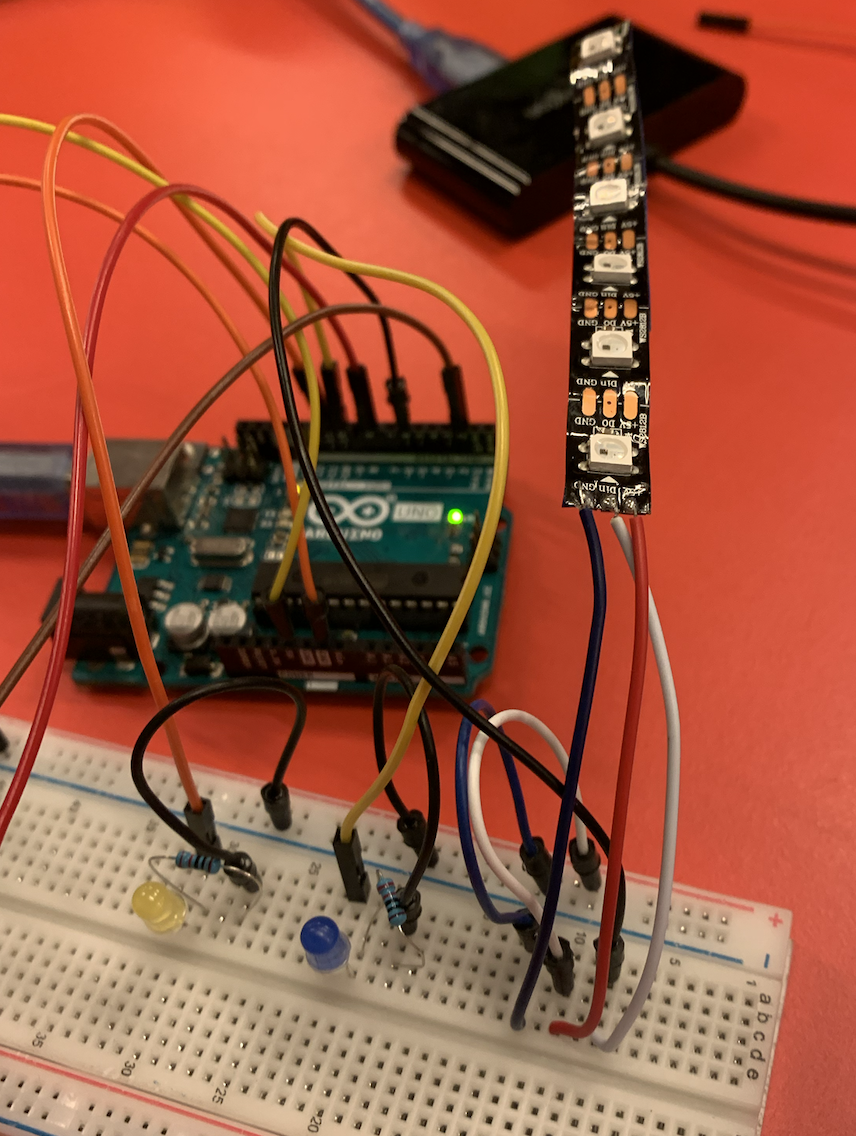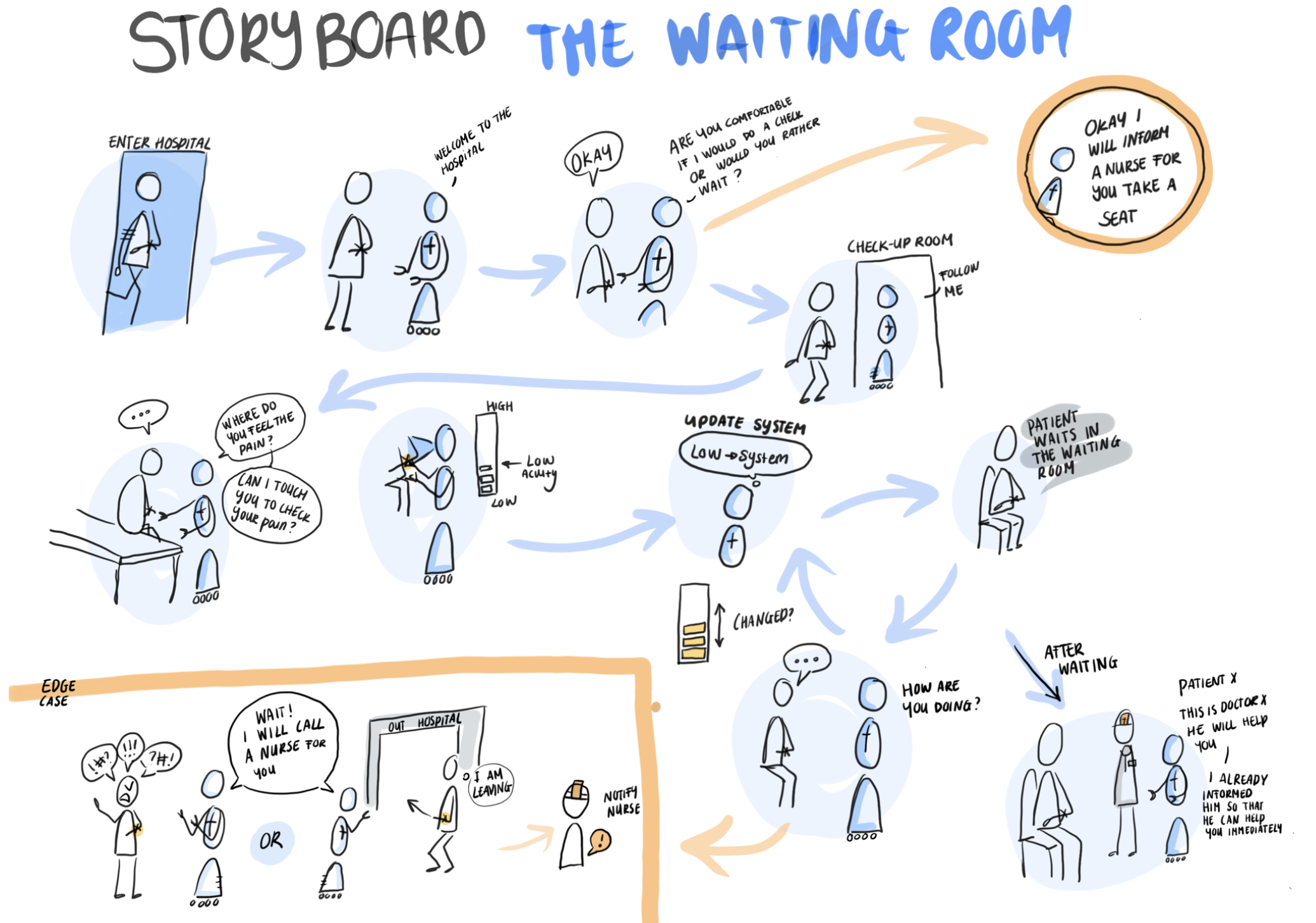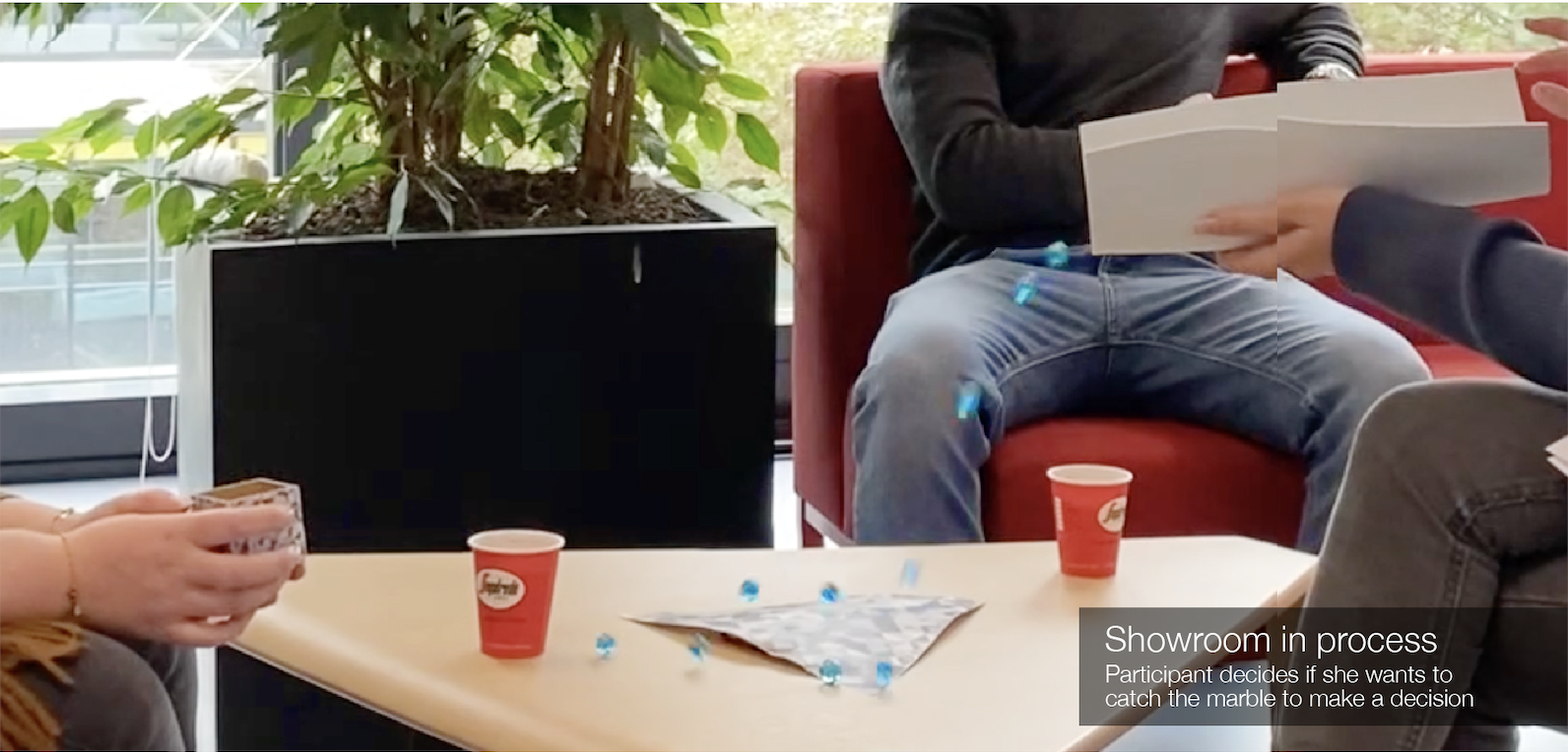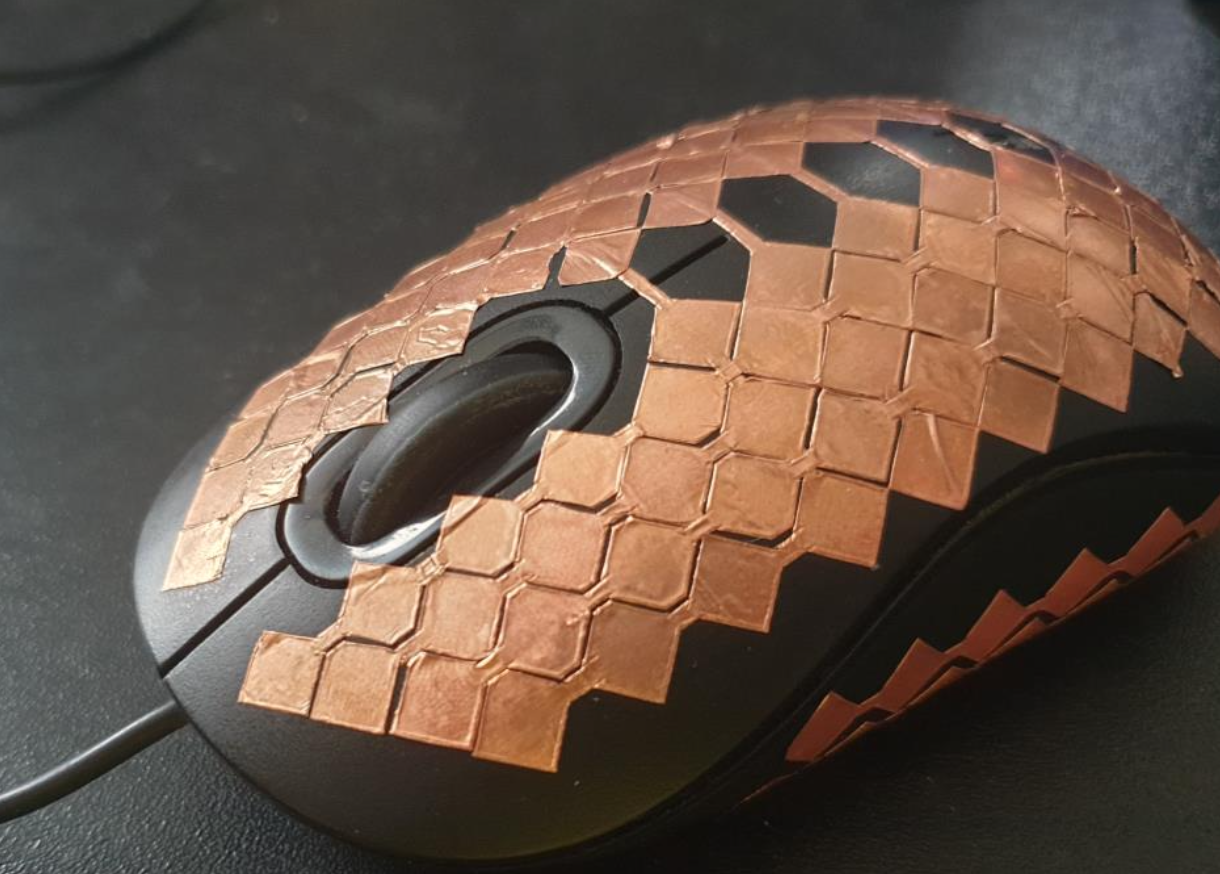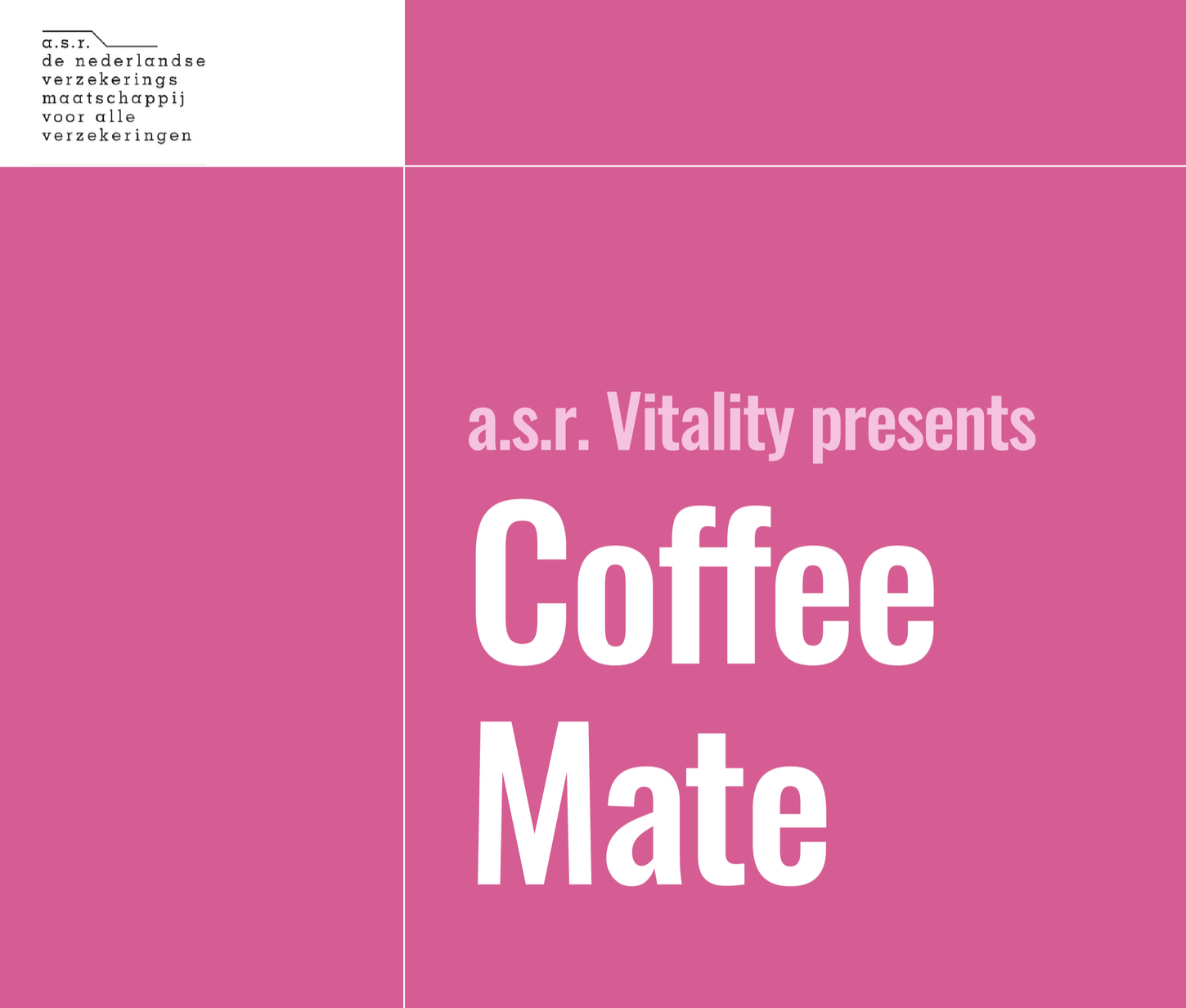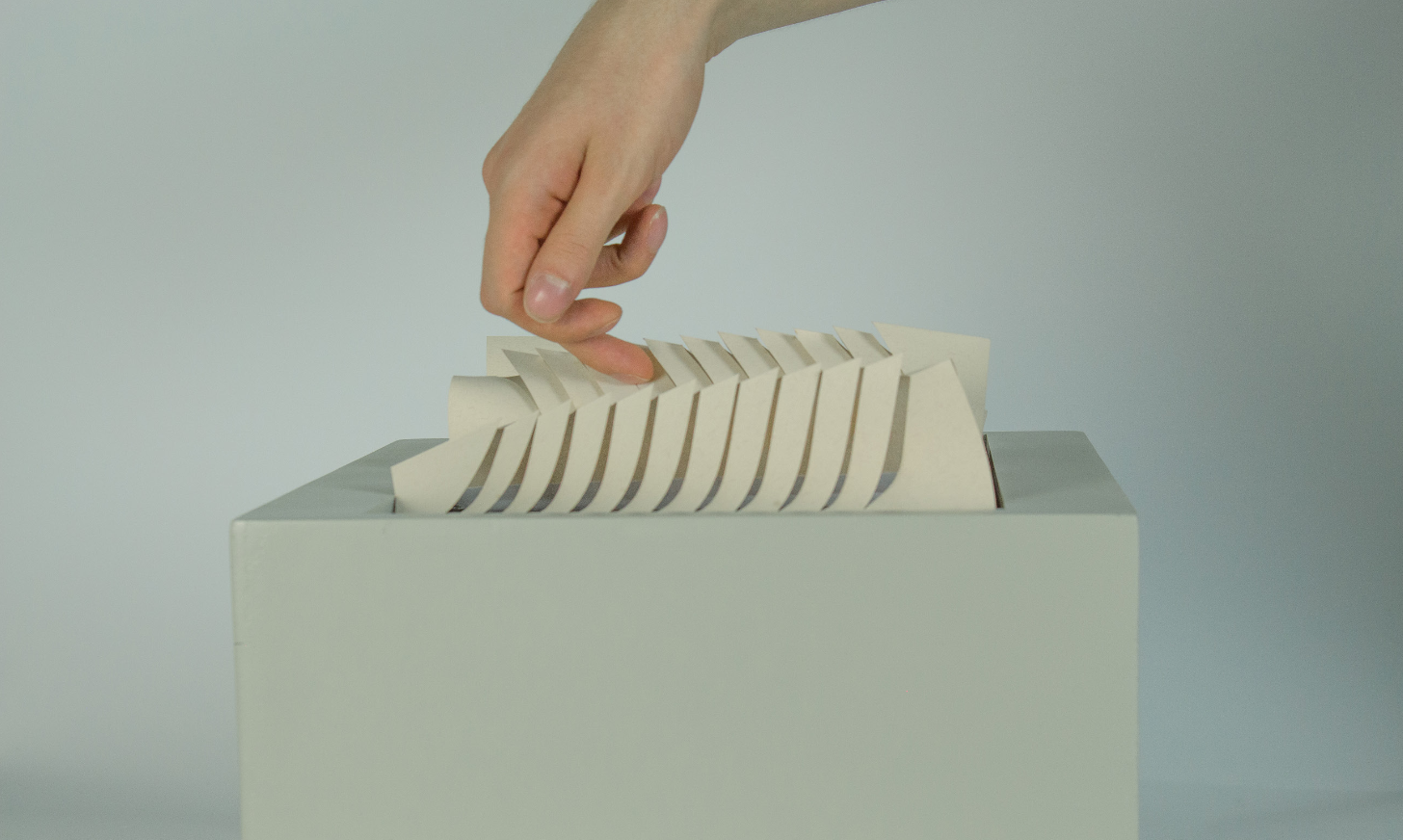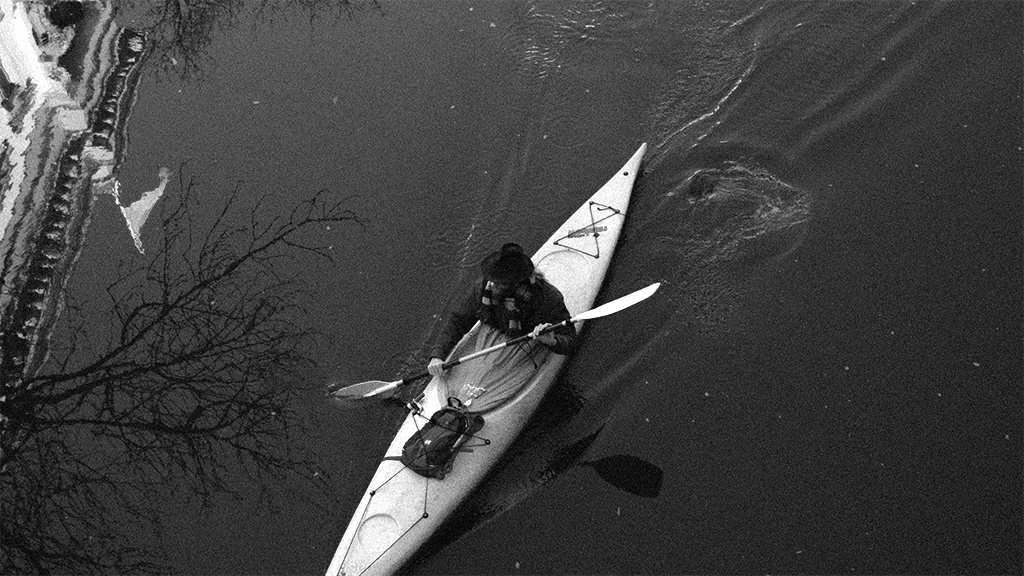The interaction can be placed in a common space, like the lobby of a building, office space or train station waiting area. All lamps are initially turned off. Whenever a person walks by, the lamp closest to them starts emitting a dim light. If the person approaches the light, it will keep increasing its brightness as long as it is being touched. This light will also show on the center lamp based on what color it is. When the person stops touching the lamp, its light fades away (the centerpiece lamp lighting still persists – until no one interacts with it for a long enough time). When two or more different lights are projected onto the centerpiece, the colors of these lights are mixed together inside the centerpiece, so for example, a red lamp followed by a yellow lamp would show up as orange on the centerpiece after the yellow lamp gets touched. Aside from the light interactions, the lamps also emit chord tones; every lamp is also associated with one of the seven base chords of a musical key. Chords are played as long as their respective lamps are touched and thus the user is able to create chord progressions. The centerpiece lamp is effectively treated as a sort of fluid container for these lights; the 7 lamps “fill up” the centerpiece lamp with more and more light, and at the end of it, the centerpiece lamp will start to play a melody based off all the chord progressions that have been played so far. The melody is pseudo-random, we would give the program various base melody patterns that sound good, and then it would proceed to choose random patterns and adapt them to fit the chord progressions chosen.
Process of making
After brainstorming we came up with three ideas, these ideas were adjusted through the feedback we received, and further refined through applying the MDA model by Hunicke et al. (2004), on these ideas to improve them. We also set up two Wizard of Oz prototype testing and interview sessions to redesign and adjust our experience dynamics.
Learning from activities
This is my first course in the Design for Games & Play series. I took this course because I’m interested in game-like experience in everyday life, and wish to explore more possibilities to design with gamified experience in mind. Though I’m interested, I have little knowledge in game experience theories, and I want to understand how these games are developed by designers and engineers. That’s my main learning goal from this course. As an industrial design student, I brought my knowledge in fast prototyping, planning and analyzing user studies, and in different design phases, I quickly visualized our concept for communication and demonstration purposes. But none of this is worth mentioning relative to what I've learned in this class and from my teammates, especially in analyzing and explaining theory. In 8 weeks’ time, we went through three design sprints, successfully applied and explained our iteration process. The collaboration within the group is highly efficient and we have quite clear communication with each other. We had a very clear task division. In the first few weeks, we were equally involved in the idea development and analysis process. Through joint decision making, we all understood where our concept is heading and how we wish to further develop it, both in prototype and in general vision. In the last two weeks, Samir and I are more focused on the prototype realization, while Jasmijn focused on our idea documentation and communication.
